The salted-butter bun—shio pan—has gone from niche Japanese import to full-blown Singapore obsession. What began as a crisp, crescent-shaped roll glazed with butter and a whisper of sea salt has evolved into something far more playful: kaya-filled buns, garlic-cheese torpedoes, kombu-scented rolls, even vending machines that dispense shio pan by the bag. Media round-ups and bakery launches over the last year confirm what your nose already knows when you pass a hot tray at 10am: shio pan is having a moment again, and bakeries are competing to make the city’s most irresistible version.
This guide pulls together the most talked-about spots right now—classic purists, creative flavour labs, and Japanese stalwarts—so you can plan a “salt bread crawl” that suits your preferences. Where possible, we’ve prioritised bakeries with strong, consistent bakes and up-to-date opening details confirmed in 2025 sources.
What makes a great shio pan?
At its core, shio pan should crackle when you tear it open. The exterior needs a thin, lacquered crust that yields to a tender, buttery crumb. A good baker balances fat and salt so the bun tastes savoury-sweet, never greasy, and stays delicious both warm and lightly reheated at home. Many Singapore bakers also craft flavoured spins—mochi-filled, ham-stuffed, seaweed-dusted—but even those should start from a benchmark dough that’s beautifully proofed and baked. Publications tracking the trend note exactly this balance: crisp shells, plush interiors, and inventive fillings that never lose sight of the base bun.
Butter Town
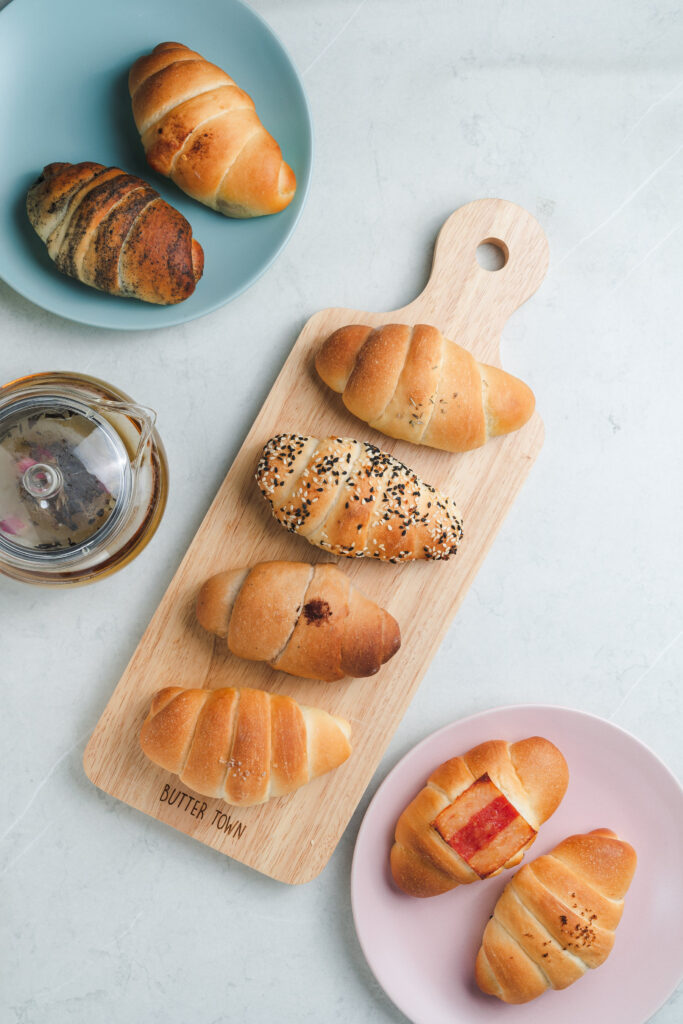
If you follow salt-bread news, you’ve seen Butter Town everywhere—from pop-ups to vending “ATMs” that dispense fresh rolls at Woodleigh Village Hawker Centre and Hillion Mall. The core dough is deeply buttery, with a fine-grained crumb that takes well to flavors like kaya or salted egg custard in limited rotations. Their site is refreshingly transparent about hours and load times, which matters because trays sell out. What we like most is the way they keep the crust wafer-thin while punching up aroma; it makes even the plain OG bun deeply satisfying with a coffee. Butter Town also experiments more than most, evidenced by seasonal collabs and a growing stable of flavours that mirror the city’s tastes.
Shio & Sato
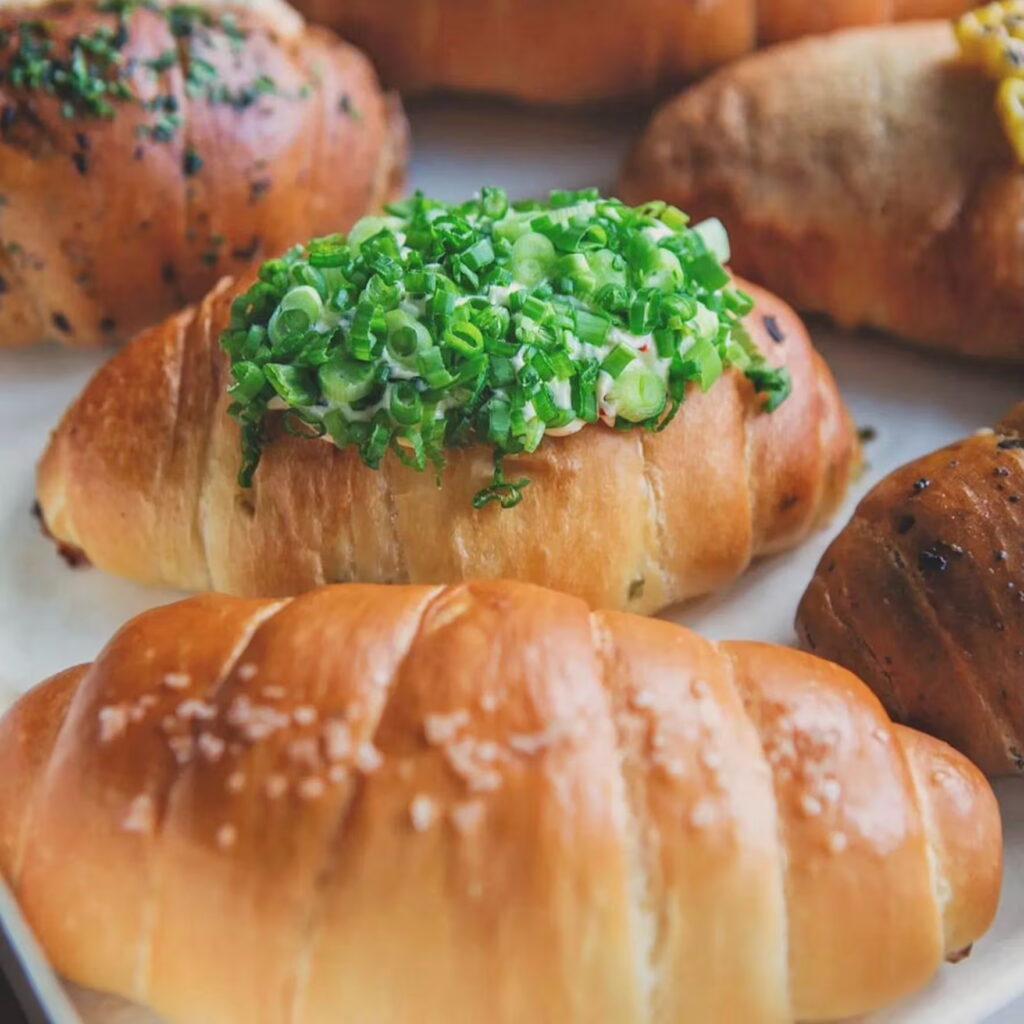
Born as a pop-up and now a cult favourite, Shio & Sato leans into Japanese technique with Singaporean flair. Think kombu-salted buns one week and earthy, savoury “mushroom butter” the next. The Instagram feed is the best place to check what’s baking and when; the team rotates boxes and “omiyage” sets that make it easy to try multiple styles. If you prefer subtlety over heavy toppings, this is the spot—flavours tend to be precise and restrained, and the base dough is consistently well-baked.
Gokoku Japanese Bakery
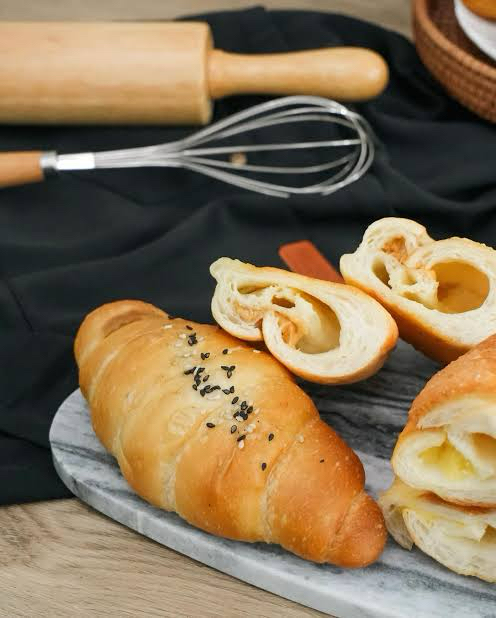
A long-running Japanese brand with outlets around town, Gokoku delivers textbook shio pan—well-shaped rolls with clean wheat aroma and a calm, savoury finish. Food writers who compared multiple bakeries consistently included Gokoku among the most reliable, especially for “original” buns without fillings. It’s the kind of bread you can build breakfast around: tear, dip into soft-scrambled eggs, repeat.
Kamome Bakery

If you like your salt bread slightly chewier with a clear pop of sea salt on the crust, Kamome Bakery belongs on your list. The Goldhill outlet in particular has earned love letters for flavour and texture, with fans recommending pre-orders because trays can vanish fast. The profile here is classic and comforting—not flashy—making it a stellar “daily bread” when you’re in the area.
Baker’s Bench Bakery

This craft bakery’s reputation rests on slow ferments and flavour, and their shio pan fits that ethos: light but layered, with a butter gloss that perfumes the crumb without weighing it down. It’s often featured in lists alongside trend-first brands, which says something about the bun’s fundamentals. If you prefer artisanal structure over novelty toppings, start here.
Butter & Friends / Sugar Thieves
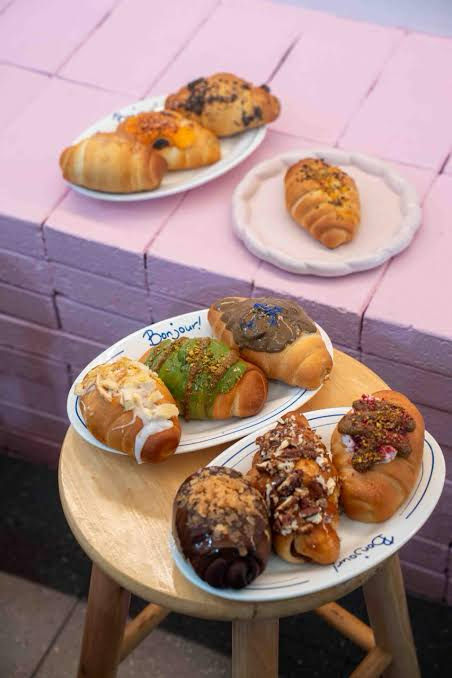
Two indie names that pop up, Butter & Friends and Sugar Thieves skew slightly sweeter in aroma and often dabble in dessert-leaning spins. They’re great for gifting boxes—the kind you bring to an office and watch vanish by noon. Expect limited batches, early sell-outs, and lively social feeds that announce baking windows.
Bakery 1946, Johan Paris and Japanese chains
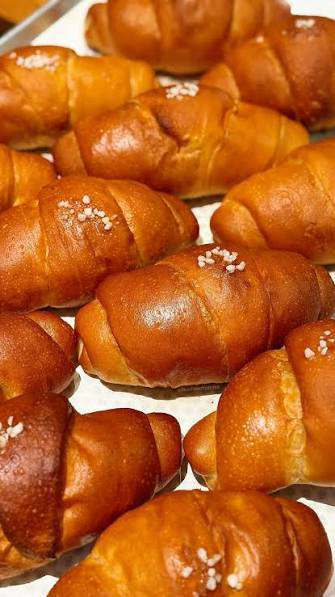
Don’t sleep on the mall bakeries. Bakery 1946, Johan Paris and similar Japanese-rooted chains have quietly turned out some of the city’s most consistent buns in 2025. The advantage is access: you can often grab a warm roll between errands without plotting a special trip. Lists this year repeatedly highlight these as dependable options when the itch for salt bread strikes unexpectedly.
Alice Boulangerie (downtown)

Proof that the French can play this Japanese game: Alice Boulangerie sells a tidy, golden shio pan with a delicate saline snap and clear “eat same day, reheat briefly” guidance. If you’re in the CBD and want a café stop that also nails the bun, this is a worthy detour—especially when you want espresso with your salt and butter.
Trend watch: flavours, pop-ups and even a Korean invasion
Shio pan’s second wind isn’t just about better dough—it’s also about play. Bakeries are stuffing rolls with ham, mochi, kaya and garlic-cheese; they’re dusting them with seaweed; they’re releasing seasonal boxes that lean Japanese one month and Singaporean kopitiam nostalgia the next.
The “glow-up” started in earnest around 2024, with brands launching rotating lines to stand out in a crowded field. Vending machines cropped up, hawker-centre ATMs started dispensing bags, and you could suddenly buy a half-dozen specialty buns on the way to the MRT. The pop-up energy even drew Korean entrants—like Yoon Yeon Dang’s Suntec showcase with more than 10 salt bread flavours—showing how the style now crosses regional bakery trends.
A practical route for your first “salt bread crawl”
Start late morning when trays are freshest.
If you’re in the city, anchor your crawl at Peninsula/City Hall or Bugis: grab a plain roll from Gokoku or Baker’s Bench, then detour to a creative stop like Shio & Sato if they’re active (always check Instagram first).
On the west side, time a stop at Butter Town’s Holland Drive or CT Hub window, or track the ATM load times to avoid empty slots.
North-central, Kamome’s Goldhill outlet pairs well with a Thomson coffee walk.
The goal is to taste one classic and one flavoured bun back-to-back—you’ll quickly learn how you like the crust thickness, butter intensity and salt level tuned. Recent round-ups list many of these routes, but always confirm hours; shio pan has a habit of selling out while you admire the tray.
How to reheat (and when not to)
Salt bread is best the day it’s baked, but a careful reheat can revive the crust. If you’ve bought an extra, keep it covered at room temperature for the day; for next-day eating, a quick 170 °C oven warm-up for three to five minutes restores the crisp-soft contrast without melting the butter out of the crumb. That’s the advice many cafés give for their own shio pan, and it tracks with home trials. Avoid microwaves; they toughen the crust and dull the fragrance.
Price, portions and value
Expect original buns in the $2–$3.50 range at mainstream shops, and a little higher for artisanal or filled versions. Multipacks from ATMs or pre-order systems often bring the per-bun cost down—useful if you’re sharing at home or the office. Some indie makers keep prices keen but sell in limited drops; set notifications if you’re chasing a specific flavour box, because demand is real. Media pieces show sample pricing across chains and boutiques that align broadly with these bands.
The short list (by personality)
If you want a purist’s bun with a delicate shell and clean butter note, go for Gokoku or Baker’s Bench—both appear repeatedly in editor picks for their “original” shio pan.
If you love flavours and limited editions, chase Butter Town or Shio & Sato—the former for vending machine convenience and collabs, the latter for meticulous Japanese-leaning riffs.
If you’re a neighbourhood grazer, Kamome and Japanese chains like Bakery 1946 and Johan Paris deliver consistency without a cross-town trip.
And if you want a café pit-stop that also aces salt bread, Alice Boulangerie is a classy downtown answer.
Pro tips for choosing your favourite
Lean on your senses at the counter. You want a golden bun with slight blistering and a satin sheen, not an oily glaze. Pick one that feels surprisingly light in the hand for its size; that often signals an airy, well-proofed crumb.
If the bakery offers both ends of the bake, try an original and a flavoured in the same sitting and pay attention to the finish: does the salt push the butter forward, or does it sit on top?
A few shops publish their reheat guidance; if you’re eating later, ask for best-practice so you don’t flatten the crust at home.
Finally, don’t be shy about asking when the next tray lands—most places will happily tell you, and it makes all the difference with a bun designed to be eaten warm.
The bottom line
Shio pan looks simple, but the best versions capture a very specific texture and taste: feathery crumb, shimmering crust, butter that perfumes without drowning, and just enough salt to make you reach for a second bun.
Singapore’s landscape is rich with options—from Butter Town’s cheeky limited editions and ATMs to Shio & Sato’s elegant boxes, from Gokoku’s classic restraint to Kamome’s crunchy-salt tops.
Plan a small crawl, eat one warm on the spot, take one home for a quick oven kiss, and decide what “best” means to you—because with salt bread, the only wrong answer is not eating it fresh.
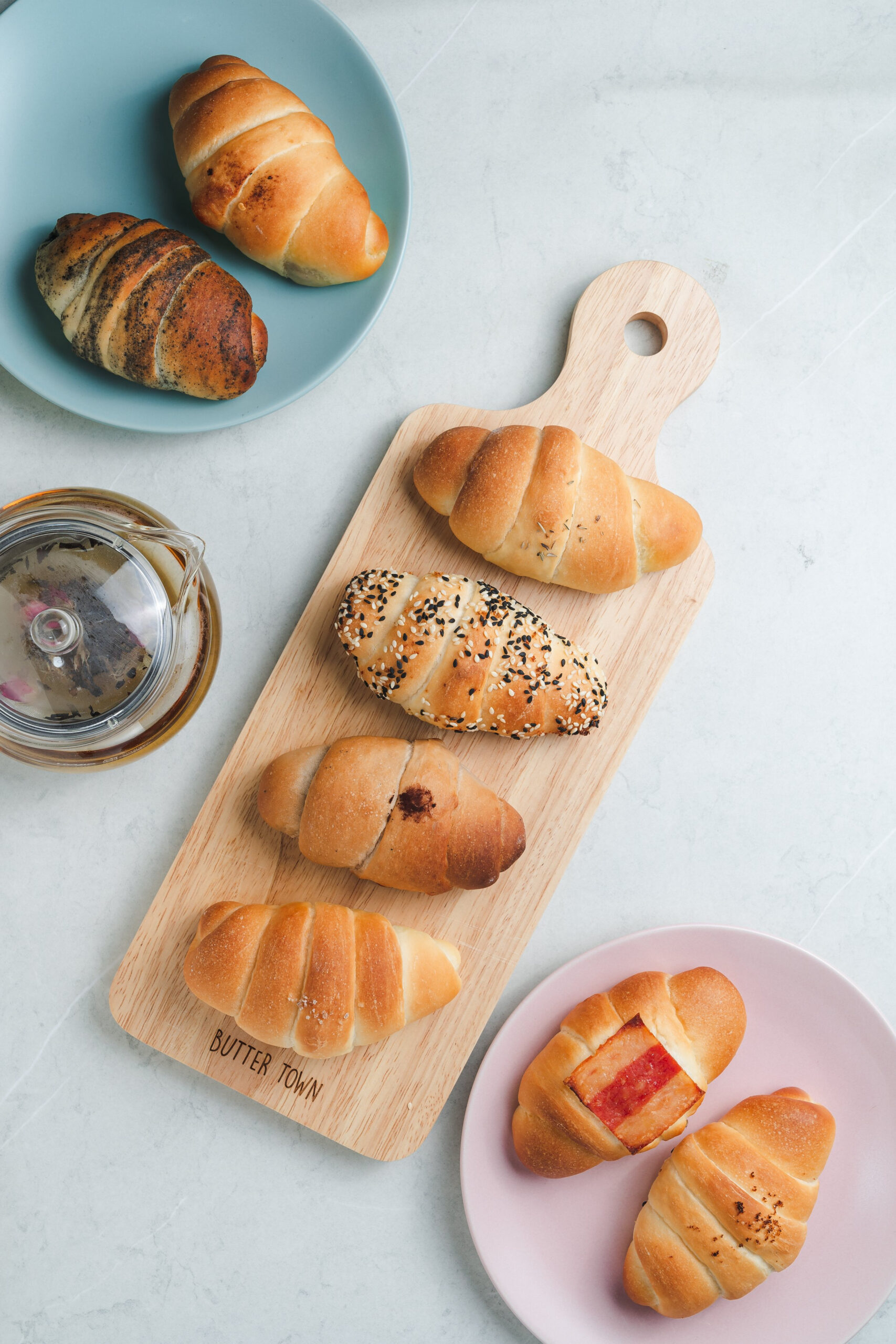
Leave a Reply